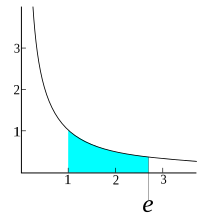
Fibrillization of Non‐Fullerene Acceptors Enables 19% Efficiency Pseudo‐Bulk Heterojunction Organic Solar Cells
Sign Up to like & getrecommendations! Published in 2022 at "Advanced Materials"
DOI: 10.1002/adma.202208211
Abstract: The structural order and aggregation of non‐fullerene acceptors (NFA) are critical toward light absorption, phase separation, and charge transport properties of their photovoltaic blends with electron donors, and determine the power conversion efficiency (PCE) of… read more here.
Keywords: organic solar; bulk heterojunction; pseudo bulk; solar cells ... See more keywords

Organic Solar Cells with Over 19% Efficiency Enabled by a 2D-Conjugated Non-fullerene Acceptor Featuring Favorable Electronic and Aggregation Structures.
Sign Up to like & getrecommendations! Published in 2023 at "Advanced materials"
DOI: 10.1002/adma.202300363
Abstract: The π-expansion of non-fullerene acceptors is a promising method for boosting the organic photovoltaic performance by allowing the fine-tuning of electronic structures and molecular packing. In this work, highly efficient organic solar cells (OSCs) are… read more here.
Keywords: organic solar; acceptor; solar cells; non fullerene ... See more keywords

Constructing High‐Performance Organic Photovoltaics via Emerging Non‐Fullerene Acceptors and Tandem‐Junction Structure
Sign Up to like & getrecommendations! Published in 2020 at "Advanced Energy Materials"
DOI: 10.1002/aenm.202000746
Abstract: In consideration of the unique advantages of new non‐fullerene acceptors and the tandem‐junction structure, organic photovoltaics (OPVs) based on them are very promising. Studies related to this emerging area began in 2016 with achieved power… read more here.
Keywords: fullerene acceptors; acceptors tandem; non fullerene; junction structure ... See more keywords

Evaluating Zn‐Porphyrin‐Based Near‐IR‐Sensitive Non‐Fullerene Acceptors for Efficient Panchromatic Organic Solar Cells
Sign Up to like & getrecommendations! Published in 2022 at "ChemistryOpen"
DOI: 10.1002/open.202200047
Abstract: Abstract Porphyrin‐based non‐fullerene acceptors (NFAs) have shown pronounced potential for assembling low‐bandgap materials with near‐infrared (NIR) characteristics. Herein, panchromatic‐type porphyrin‐based molecules (POR1–POR5) are proposed by modulating end‐capped acceptors of a highly efficient porphyrin‐based NFA PORTFIC(POR)… read more here.
Keywords: organic solar; solar cells; non fullerene; fullerene acceptors ... See more keywords

Organic solar cells based on anthracene-containing PPE–PPVs and non-fullerene acceptors
Sign Up to like & getrecommendations! Published in 2018 at "Chemical Papers"
DOI: 10.1007/s11696-018-0466-y
Abstract: Lately, non-fullerene acceptors (NFAs) have received increasing attention for use in polymer-based bulk-heterojunction (BHJ) organic solar cells (OSCs), as improved photovoltaic performance compared to classical polymer–fullerene blends could be demonstrated. In this study, polymer solar… read more here.
Keywords: organic solar; fullerene; non fullerene; cells based ... See more keywords

Spirobifluorene-based non-fullerene acceptors for the environmentally benign process
Sign Up to like & getrecommendations! Published in 2020 at "Dyes and Pigments"
DOI: 10.1016/j.dyepig.2020.108369
Abstract: Abstract Spirobifluorene based non-fullerene acceptors (NFAs) having meta-ethylhexyl oxy (m-OEh) substituents (PBDB-T: spiro-bridged NFAs) were synthesized. The orthogonal molecular structure of the m-OEh-substituted spirobifluorene with different end groups provided high solubility and kept the stable… read more here.
Keywords: based non; non fullerene; solvent; spirobifluorene based ... See more keywords

Efficient photovoltaic performances and enhanced dielectric constants enabled by a fluorinated quinoxaline-based polymer with non-fullerene acceptors
Sign Up to like & getrecommendations! Published in 2019 at "Organic Electronics"
DOI: 10.1016/j.orgel.2019.06.007
Abstract: Abstract Non-fullerene acceptors (NFAs) are widely applied in polymer solar cells (PSCs) to solve the inherent drawbacks like unadjustable energy levels and limited absorptive region of fullerene-based acceptors. The suitable bandgaps with low-lying highest occupied… read more here.
Keywords: quinoxaline based; fullerene; fluorinated quinoxaline; polymer ... See more keywords

Near-infrared absorbing non-fullerene acceptors with unfused D-A-D core for efficient organic solar cells
Sign Up to like & getrecommendations! Published in 2021 at "Organic Electronics"
DOI: 10.1016/j.orgel.2021.106131
Abstract: Abstract Two non-fullerene acceptors based on D-A-D-type unfused central units, i.e., BCPDT-1 and BCPDT-2, were synthesized, employing 3-bis(4-(2-ethylhexyl)-thiophen-2-yl)-5,7-bis(2ethylhexyl)benzo-[1,2:4,5-c′]-dithiophene-4,8-dione (BDD) unit as the A moiety and 4,4-dialkyl-4H-cyclopenta[2,1-b:3,4-b′]dithiophene (CPDT) unit as the D moiety. The two molecules… read more here.
Keywords: solar cells; near infrared; fullerene acceptors; non fullerene ... See more keywords

Regio-Specific Selenium Substitution in Non-Fullerene Acceptors for Efficient Organic Solar Cells
Sign Up to like & getrecommendations! Published in 2019 at "Chemistry of Materials"
DOI: 10.1021/acs.chemmater.9b01242
Abstract: A set of isomeric ladder type non-fullerene acceptors (NFAs), SRID-4F and TRID-4F, was designed and synthesized to systematically investigate the structure–property relationship of selenium substitution on A-D-A type NFAs. It was found that regio-specific selenium… read more here.
Keywords: regio specific; selenium substitution; non fullerene; selenium ... See more keywords

Non-Fused Non-Fullerene Acceptors with an A-D-A'-D-A Framework and a Benzothiadiazole Core for High-Performance Organic Solar Cells.
Sign Up to like & getrecommendations! Published in 2020 at "ACS applied materials & interfaces"
DOI: 10.1021/acsami.0c01850
Abstract: Non-fullerene acceptors (NFAs) have contributed significantly to the progress of organic solar cells (OSCs). However, most NFAs featured a large fused-ring backbone, which usually require tedious multiple-step synthesis and are not applicable to commercial application.… read more here.
Keywords: organic solar; non fullerene; non fused; fullerene acceptors ... See more keywords

Non-Fullerene Acceptors with Benzodithiophene-Based Fused Planar Ring Cores for Organic Solar Cells.
Sign Up to like & getrecommendations! Published in 2023 at "ACS applied materials & interfaces"
DOI: 10.1021/acsami.3c01626
Abstract: Fused aromatic rings are widely employed in organic solar cell (OSC) materials due to their planarity and rigidity. Here, we designed and synthesized four two-dimensional non-fullerene acceptors, D6-4F, D6-4Cl, DTT-4F, and DTT-4Cl, based on two… read more here.
Keywords: dtt; planar ring; organic solar; non fullerene ... See more keywords